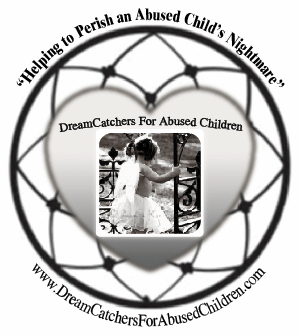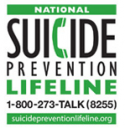Recognizing the warning signs of abuse can save children’s lives
Just days before 9-month-old Karlie Mellick was fatally battered at her Fairdale home, her mother, Kara Mellick, four day-care workers and a physician all noticed the infant’s bruises.
Yet no one reported the marks, even on her face and ear, which experts say are a key warning sign of abuse.
On June 11, Karlie died. She had suffered a severe head injury, a broken arm and leg and fractured ribs.
Her mother’s boyfriend, Matthew Vaughn, who was babysitting, told police that he shook the baby and slammed her repeatedly on the floor, according to court records. Vaughn, 21, who is charged with murder, has pleaded not guilty.
Related
- Many Kentucky social workers ‘bombarded’ by pressures of job
- Victims of child abuse come from all parts of Kentucky
- Kentucky officials knew that many of the children who died from abuse might be at risk
- Graphics: Child abuse by the numbers; child abuse trends
- Painful lives cut short: Three tragic tales of child abuse in Kentucky
Karlie’s violent death might have been prevented if just one person had recognized the bruises as warning signs and reported them to child-protection authorities, said Dr. Melissa Currie, a University of Louisville forensic pediatric expert.
“It’s a perfect example of what we’re talking about,” said Currie, director of a UofL unit created to evaluate children for possible abuse.
Karlie’s bruises before her death were “red flag” signs of abuse — especially those on the ear, which is mostly cartilage and rarely bruises unless it has been subjected to a forceful blow, Currie and other child-abuse experts said.
“Medical studies have shown that a child with a bruise on the ear is at higher risk of becoming a fatality,” said Debbie Acker, a nurse with the Cabinet for Health and Family Services who trains workers to recognize medical evidence of child abuse and neglect. “The force that it takes to cause a bruise to the ear also can cause damage to a child’s brain.”
State officials and child abuse experts believe many deaths could be averted if people who come in contact with young children understood that bruises — especially to the face, ear and trunk —should be reported as signs of possible abuse.
Currie, who evaluated Karlie’s case for police, outlined those concerns in a letter in Vaughn’s court file.
“It is unfortunate that her previous bruising did not result in a CPS (state Child Protective Service) report and a complete medical evaluation for abuse,” Currie wrote in the letter, also signed by Kathy Recktenwald, a forensic nurse specialist at UofL. “To be clear, it is not normal for infants to have bruises.”
Matthew Vaughn, 21, is charged with murder in the death of Katie Mellick, who was 9 months old when she was killed. He has pleaded not guilty.
A 2007 study of 20 Kentucky children under age 3 — 10 who died and another 10 who suffered life-threatening injuries from abuse — found 90 percent had bruising that in many cases had been documented by a doctor or an official, such as a social worker. But in those cases no one had followed up on or questioned the cause of the bruising.
Dr. Mary Clyde Pierce, the former UofL professor who led the study, said bruising should be taken seriously, especially in very young children.
“It is the most common sign of abuse and the most likely to be overlooked,” said Pierce, who is now an associate professor of pediatrics at Northwestern University in Chicago, specializing in child-abuse research.
While more aggressive reporting might result in some unnecessary investigations, Currie said she believes many more instances of abuse would be substantiated. A report also would allow a social worker to make inquiries and investigate further if a parent or other caregiver’s explanation didn’t make sense.
A report to authorities also might help identify abuse that a parent isn’t aware of, Currie said. Sometimes, inquiries reveal that someone else — a baby sitter or relative, for example — is harming a child when the parent isn’t around and is unaware of the abuse, she said.
Currie said she once treated an infant with an abusive head injury who arrived at the Kosair Children’s Hospital emergency room still wearing a cast for a previously broken leg, an injury that should have been questioned at the time and reported as possible abuse. Broken legs, especially in children too young to walk, are always suspicious, she said.
In Karlie’s case, her mother told police that she first noticed some bruising on her daughter’s left ear on May 24, when she took her to a doctor for an ear infection. The doctor said it might be a “circulation issue” and prescribed an antibiotic for the infection, Kara Mellick told police. During the next two weeks, four workers at Karlie’s day-care center noticed, and pointed out to her mother, bruises on the infant’s face, ear and hip, the workers said in police interviews.
One of them later told police she began documenting the bruises, starting June 1, because “the bruises had continued and were becoming worse,” the police report said. “She felt the bruises were no longer ordinary, especially the bruising on the victim’s ear.”
Kara Mellick told the day-care workers she was planning to take Karlie to the doctor to find out why she was getting so many bruises, they told police. Mellick told police she had noticed bruises on her daughter’s ear, jaw, arms, side and hip in the days before her death and had wondered whether the baby might be getting injured at the day-care center.
On Sunday, June 7, the day Karlie suffered the injuries that would prove fatal, Kara Mellick left for her job at Six Flags Kentucky Kingdom about 8:30 a.m., leaving her sleeping infant with her boyfriend, she told police.
Later that day, according to court records, Vaughn e-mailed Mellick: “The baby is making me crazy b/c every time I walk out of the room she starts crying just because she don’t see me.”
Mellick e-mailed him back: “I am sorry just be patient with her.”
Around 3:30 p.m. Vaughn called Mellick and told her to come home immediately because Karlie was unconscious, the police report said. Mellick arrived just in time to ride in the ambulance with her daughter to Kosair.
Karlie died four days later.
SOURCE: http://www.courier-journal.com/article/20091213/NEWS01/912130305/Recognizing+the+warning+signs+of+abuse+can+save+some+children+s+lives



















![Validate my RSS feed [Valid RSS]](http://dreamcatchersforabusedchildren.com/wp-content/uploads/2009/10/valid-rss.png)












